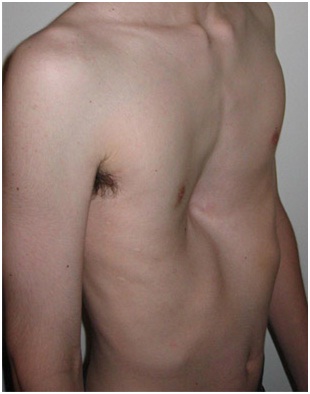Pectus Excavatum Causes, Symptoms, Diagnosis and treatment

What Is Pectus Excavatum?
Pectus excavatum is the most common congenital deformity of the anterior wall of the chest, in which several ribs and the sternum grow abnormally. This produces a caved-in or sunken appearance of the chest.
It can either be present at birth or not develop until puberty.
Pectus excavatum is sometimes referred to as cobbler’s chest, sunken chest, the crevasse, or funnel chest
Causes Of Pectus Excavatum:
Although the underlying cause of Pectus excavatum is yet unknown, it is speculated to be inherited as it is observed to run in families.
Symptoms Of Pectus Excavatum:
For most people, the only symptom of Pectus excavatum is the sunken appearance of the sternum.
However, in severe cases of Pectus excavatum, the breastbone may compress the lungs and heart.
Signs and symptoms may include:
- Decreased exercise tolerance
- Rapid heartbeat or heart palpitations
- Recurrent respiratory infections
- Wheezing or coughing
- Chest pain
- Heart murmur
- Fatigue
Diagnosis Of Pectus Excavatum:
Pectus excavatum can be diagnosed via the following tests:
- Chest X-ray
- Computerized tomography (CT)
- Electrocardiogram
- Echocardiogram
- Lung function tests
- Exercise test
Treatment Of Pectus Excavatum:
Surgery is available for those wishing to treat Pectus excavatum.
However, it is limited to only severe cases.
The following types of surgeries are available:
- Larger incision.
A center-of-the-chest incision allows the surgeon to view the breastbone directly. The deformed cartilage attaching the ribs to the lower breastbone is removed and the breastbone is fixed into a more normal position with surgical hardware, such as a metal strut or mesh supports. These supports are removed in six to 12 months.
- Smaller incisions.
For a minimally invasive procedure, small incisions are placed on each side of the chest, under each arm. Long-handled tools and a narrow fiber-optic camera are inserted through the incisions. A curved metal bar is threaded under the depressed breastbone, to raise it into a more normal position. In some cases, more than one bar is used. The bars are removed after two years.
By : Natural Health News




